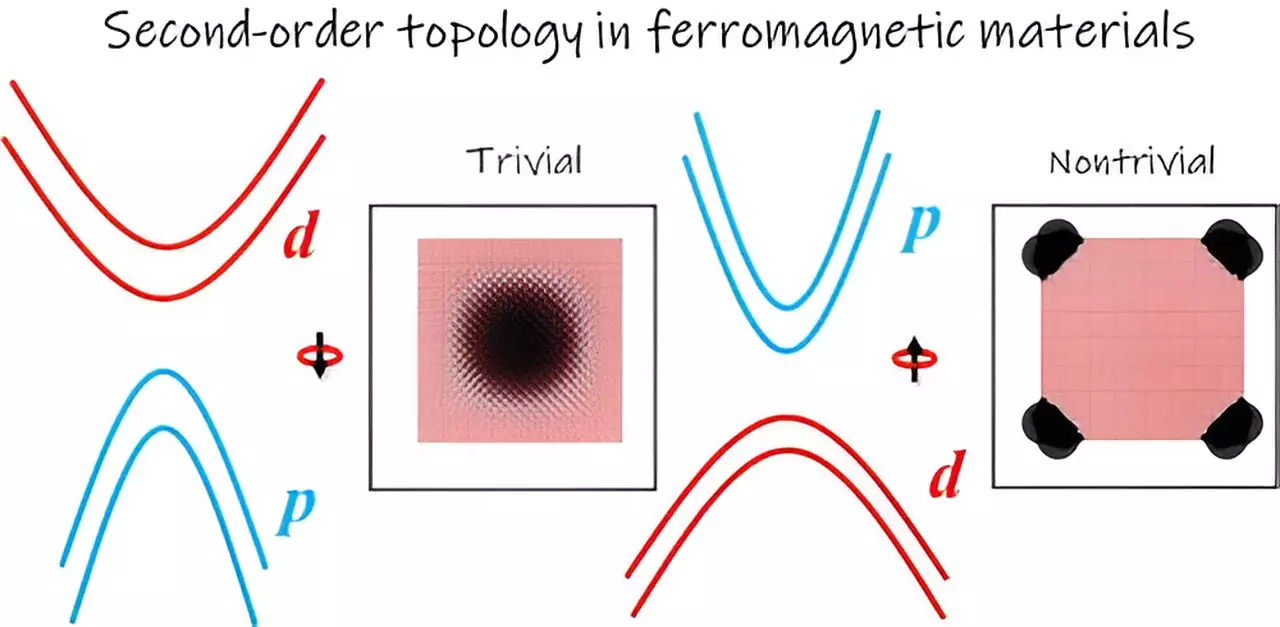The burgeoning field of spintronics is set to benefit significantly from innovative advancements in materials science, particularly from the discovery of intrinsic magnetic second-order topological insulators. A recent study published by researchers from Monash University, affiliated with the FLEET Center, sheds light on these groundbreaking materials and their implications for future electronic devices. While the complexities of these materials may seem daunting, their potential to harness electron spin represents a paradigm shift in how information is processed and stored.
Understanding Topological Insulators
Topological insulators (TIs) are a unique class of materials that defy traditional electronic behavior. Unlike conventional insulators that prevent electron flow, TIs allow electrons to move freely along their surfaces while remaining insulated within their bulk. This property is particularly manifest in three-dimensional TIs, such as Bi2Se3, which support two-dimensional Dirac fermions on their surfaces. However, the latest research delves deeper, exploring the realm of second-order topological insulators, which display (m-2)-dimensional boundary states within m-dimensional spaces. This novel concept expands the traditional understanding of TIs, presenting new pathways for electron conduction.
Ferromagnetic semiconductors have emerged as crucial players in the realm of spintronics because they combine magnetic and semiconductor properties. Materials like CrI3, Cr2Ge2Te6, and VI3 have garnered considerable attention for their ability to manipulate electron spins effectively. However, traditional intrinsic ferromagnetic semiconductors tend to exhibit strong electron-electron correlations, leading to ineffective communication between neighboring atoms. This interaction dampens their potential as topological materials, thus posing a challenge for researchers.
The study led by Dr. Zhao Liu and Professor Nikhil Medhekar provides a breakthrough approach to overcoming this barrier. They identified that certain intrinsic ferromagnetic semiconductors exhibit a unique inverted orbital arrangement that changes the dynamics of electron interactions within the material. This discovery opens new avenues for creating materials with desired electronic and magnetic properties, vital for advancing spintronic devices.
At the heart of this research lies the phenomenon of orbital inversion between p orbitals from anions and d orbitals from cations. In conventional ferromagnetic semiconductors, the p orbitals typically have lower energy and serve as mediators for super-exchange interactions. However, the Monash University team observed that in some cases, the energy levels are inverted, leading p orbitals to dominate despite their typically lower energy status. This inversion creates the conditions for nontrivial topological phases to emerge, crucial for effective spintronic applications.
The findings revealed that materials like 1T-VS2 and CrAs monolayer exhibit these inverted p-d orbital configurations. The unique crystal structures of these materials, a hexagonal lattice for 1T-VS2 and a square lattice for CrAs, play a pivotal role in their topological characteristics.
The ability to manipulate topological states within these materials could have profound implications for the development of new spintronic devices. The presence of localized states at the corners of the aforementioned materials presents an exciting opportunity for their detection using advanced techniques like spin-polarized scanning tunneling microscopy. This capability could lead to significant advancements in the understanding and utilization of second-order topological insulators.
Professor Medhekar also noted the potential application of this research to other classes of materials, specifically Kondo insulators. The interplay of d and f orbitals in these materials could yield additional insights into second-order topological effects, thus broadening the scope of future studies in the domain.
The insights from the Monash University team’s research not only broaden our understanding of intrinsic magnetic second-order topological insulators but also pave the way for future advancements in spintronics. The intersection of topology and magnetism continues to promise transformative developments in electronic materials, potentially reshaping the landscape of information technology.


Leave a Reply